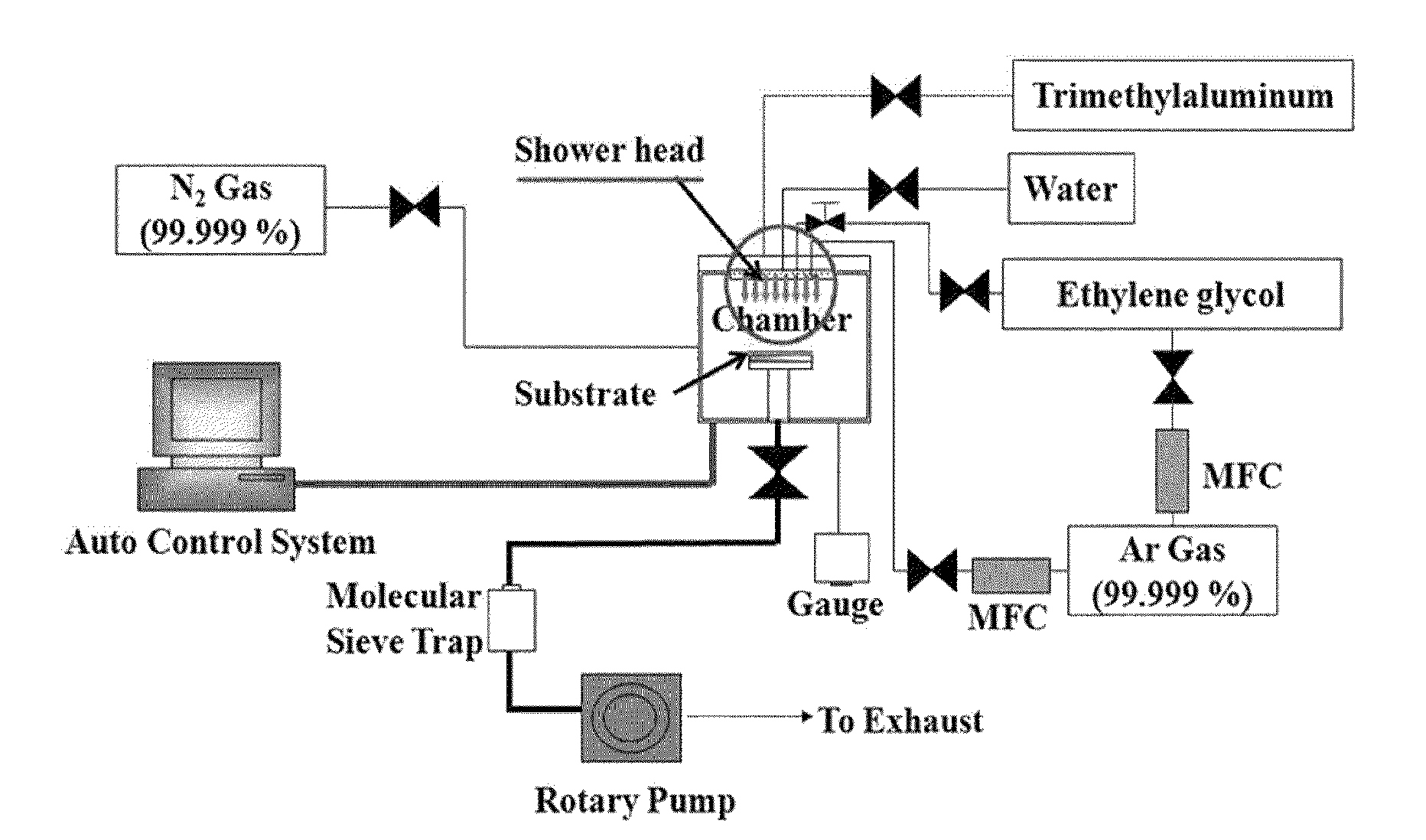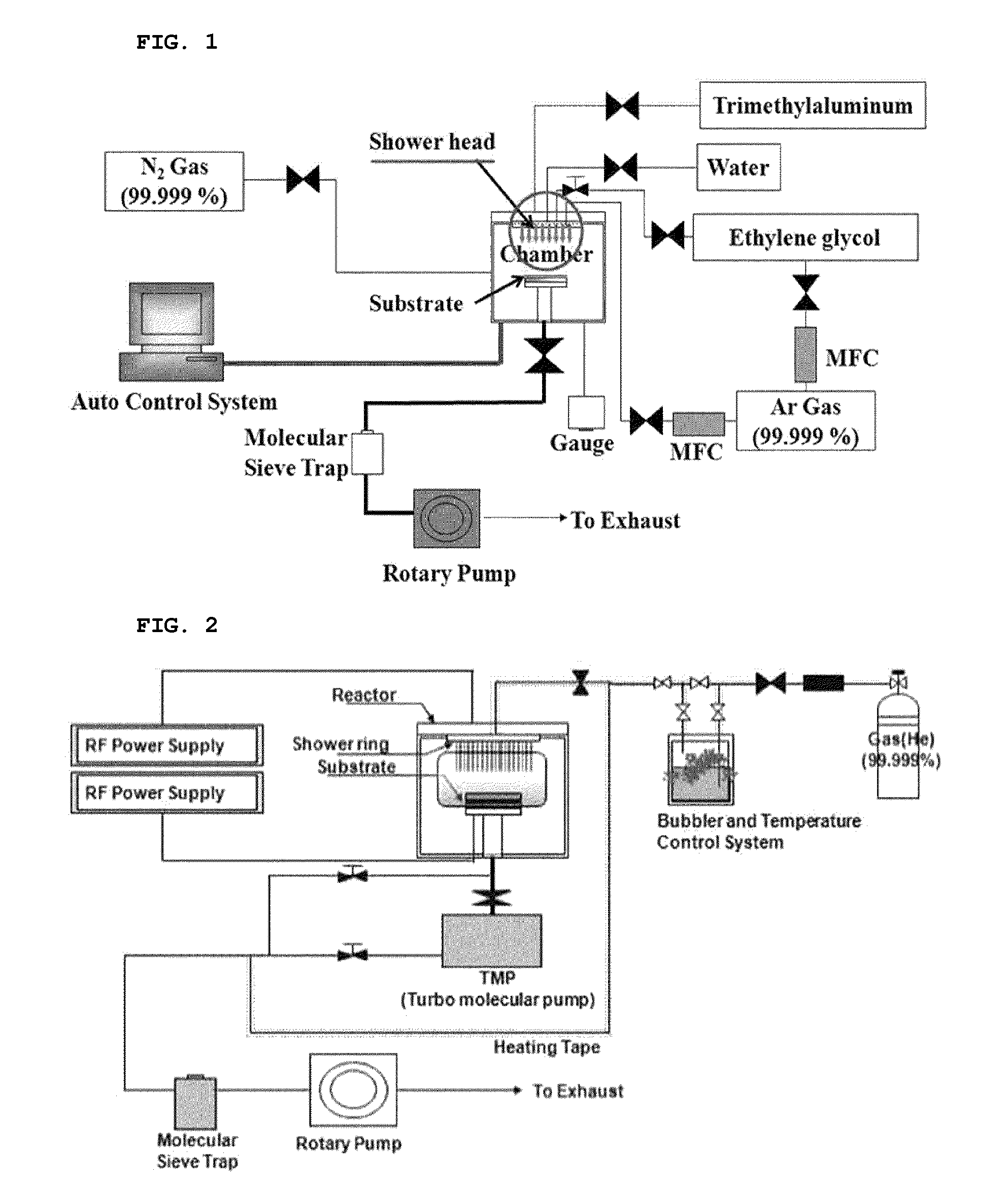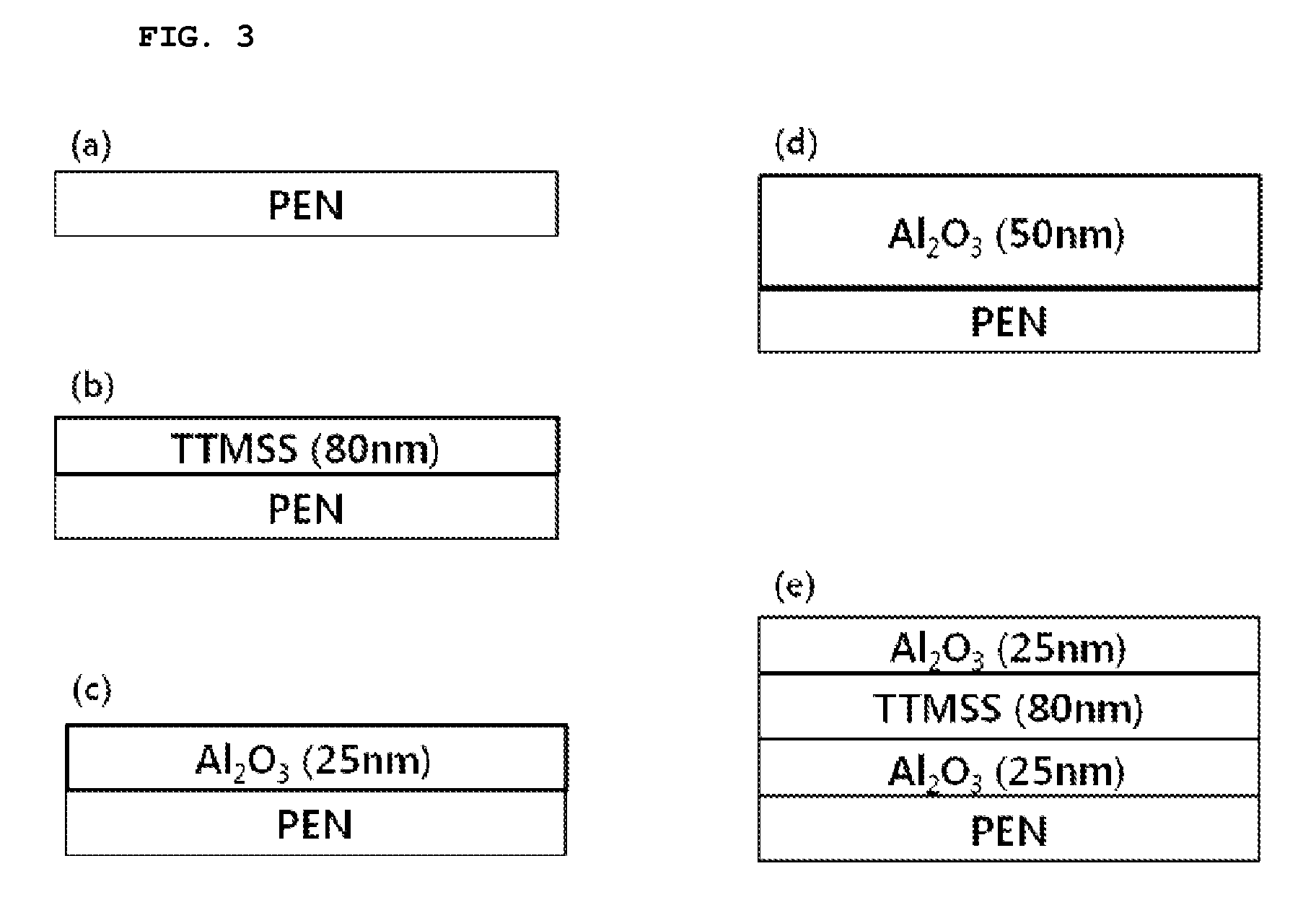Polymer/inorganic multi-layer encapsulation film
a multi-layer encapsulation and polymer technology, applied in the direction of transportation and packaging, solid-state devices, semiconductor devices, etc., can solve the problems of difficult use of oled flexible displays, many kinds of polymer substrates, oxygen permeability, etc., to achieve flexibility in the overall layer, suppress oxygen or moisture effectively, and prevent device degradation
- Summary
- Abstract
- Description
- Claims
- Application Information
AI Technical Summary
Benefits of technology
Problems solved by technology
Method used
Image
Examples
example 1
Formation of Inorganic Thin Film Layer using Atomic Layer Deposition
[0064]An inorganic thin film layer was formed by performing atomic layer deposition using an apparatus illustrated in FIG. 1. As such, a vacuum chamber was maintained at 500 mTorr, and trimethyl aluminum and H2O were injected via a difference in pressure from the chamber, thus forming an Al2O3 inorganic thin film. In order to accomplish uniform deposition on the entire surface of polyethylene naphthalate (PEN) used as a plastic substrate, the temperature of the substrate was maintained at 85° C., and thus thermal energy suitable for a chemical reaction was supplied. Furthermore, the injection time of the inorganic material and the purging time of the remaining gas were adjusted, whereby the process conditions (TMA 1 sec—purge 15 sec—H2O 1 sec—purge 15 sec; 1 cycle) were determined. Through one cycle process, a thin film having a thickness of 0.12 nm was deposited, and 200 processes were repeated, thus manufacturing ...
example 2
Formation of Plasma polymer Thin Film Layer using PECVD
[0065]A plasma polymer thin film layer was formed using a PECVD (Plasma Enhanced Chemical Vapor Deposition) apparatus illustrated in FIG. 2. A plasma polymer thin film deposition process was implemented by means of a process chamber having a chamber lid at the top thereof and a chamber body at the bottom thereof. Used as the precursor of the plasma polymer thin film was tetrakis(trimethylsilyloxy)silane (TTMSS). This precursor was used as a reactive gas, and the reactive gas was uniformly sprayed onto a substrate placed on a substrate susceptor in the chamber body by means of a shower ring provided at the chamber lid maintained at 200 mTorr, thus depositing a thin film. The temperature of 88° C. or higher was maintained so that TTMSS used as the reactive gas was emitted in a vapor state from a bubbler, and the temperature of the line was maintained at 99° C. in order to keep the vapor state even in the line connected up to the c...
example 3
Measurement of Moisture and Oxygen Permeability of Multi-layer Encapsulation Film According to the Present Invention
[0066]The multi-layer encapsulation film manufactured by the method of forming the inorganic thin film layer in Example 1 and the method of forming the plasma polymer thin film layer in Example 2 was measured for moisture and oxygen permeability using Ca-test.
[0067]A variety of films are shown in FIG. 3. FIG. 3(b) illustrates a PEN substrate having a 80 nm thick TTMSS polymer layer deposited thereon, FIG. 3(c) illustrates a PEN substrate having a 25 nm thick Al2O3 layer deposited thereon, FIG. 3(d) illustrates a PEN substrate having a 50 nm thick Al2O3 layer deposited thereon, and FIG. 3(e) illustrates a PEN substrate having a 25 nm thick Al2O3 layer / a 80 nm thick TTMSS polymer layer / a 25 nm Al2O3 layer deposited thereon. The encapsulation properties of these substrates were compared and analyzed using Ca-test equipment illustrated in FIG. 4.
[0068]150 nm thick Al was d...
PUM
| Property | Measurement | Unit |
|---|---|---|
| thickness | aaaaa | aaaaa |
| thickness | aaaaa | aaaaa |
| power | aaaaa | aaaaa |
Abstract
Description
Claims
Application Information
 Login to View More
Login to View More - R&D
- Intellectual Property
- Life Sciences
- Materials
- Tech Scout
- Unparalleled Data Quality
- Higher Quality Content
- 60% Fewer Hallucinations
Browse by: Latest US Patents, China's latest patents, Technical Efficacy Thesaurus, Application Domain, Technology Topic, Popular Technical Reports.
© 2025 PatSnap. All rights reserved.Legal|Privacy policy|Modern Slavery Act Transparency Statement|Sitemap|About US| Contact US: help@patsnap.com



